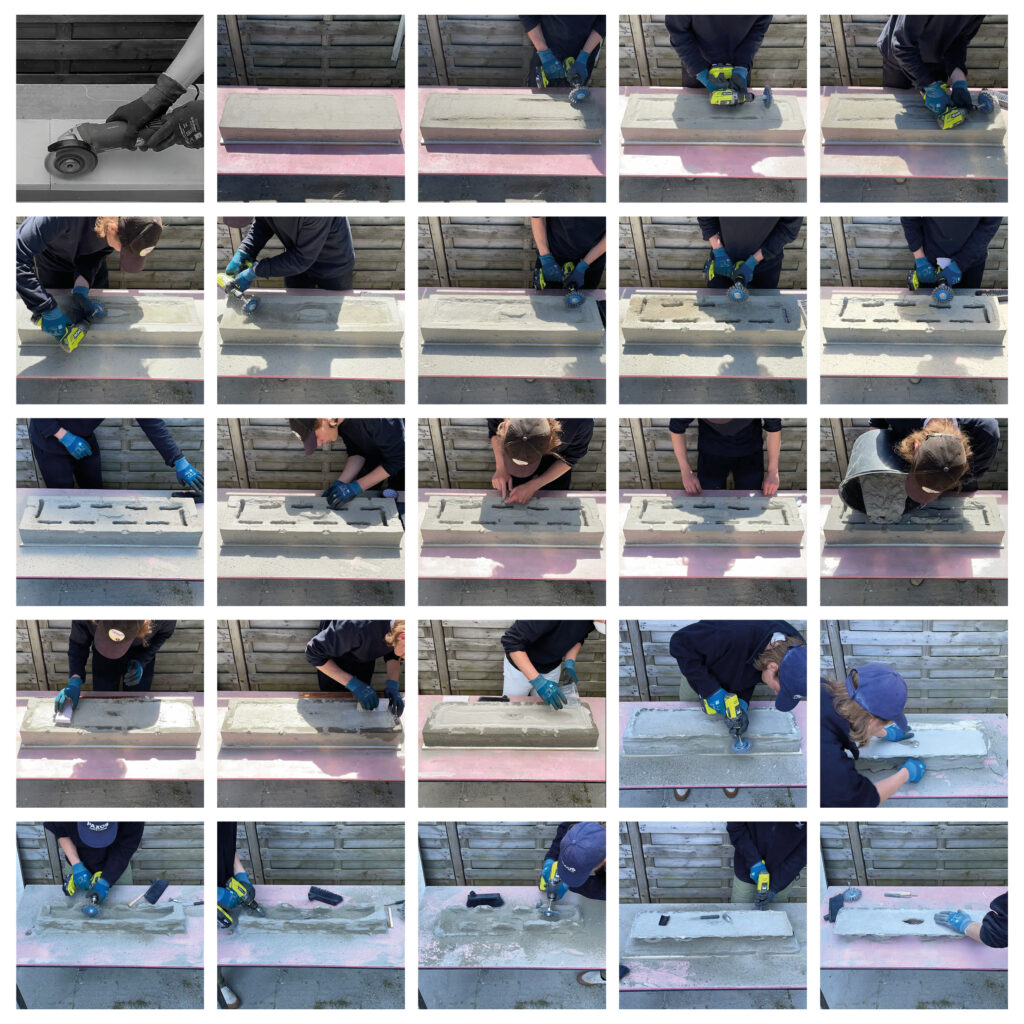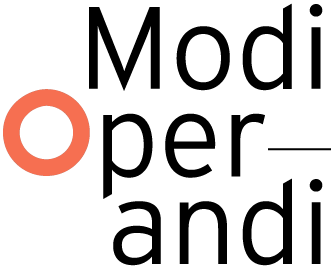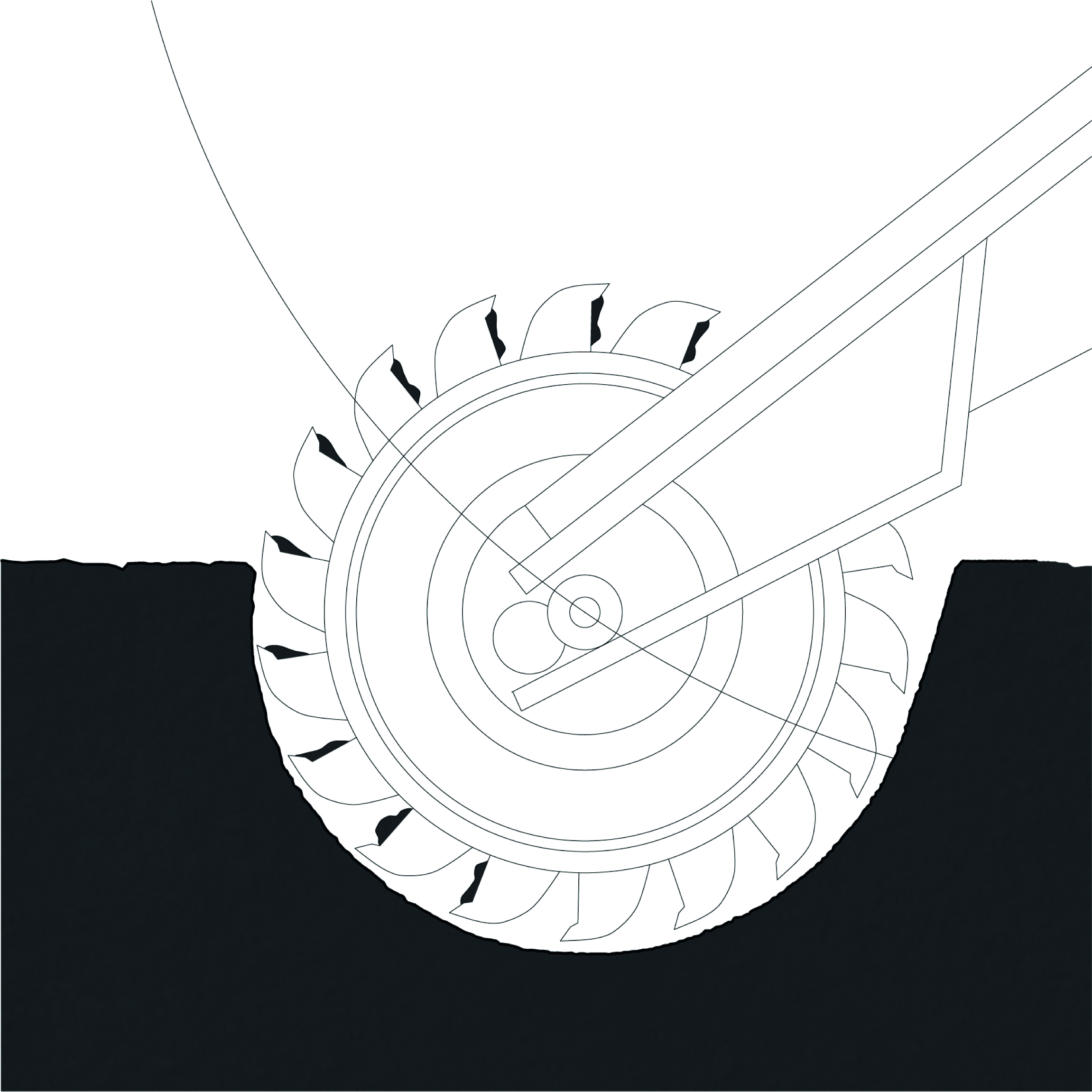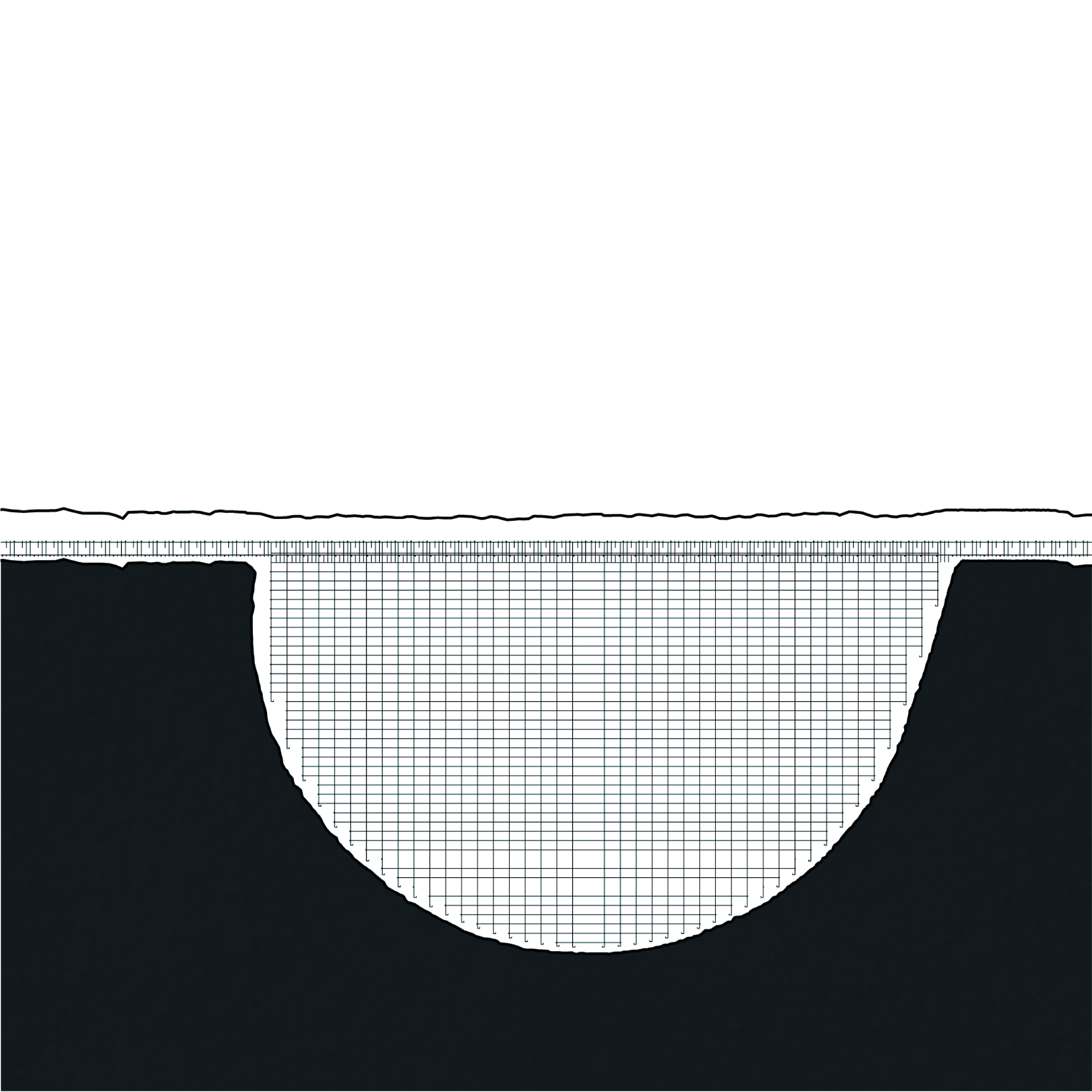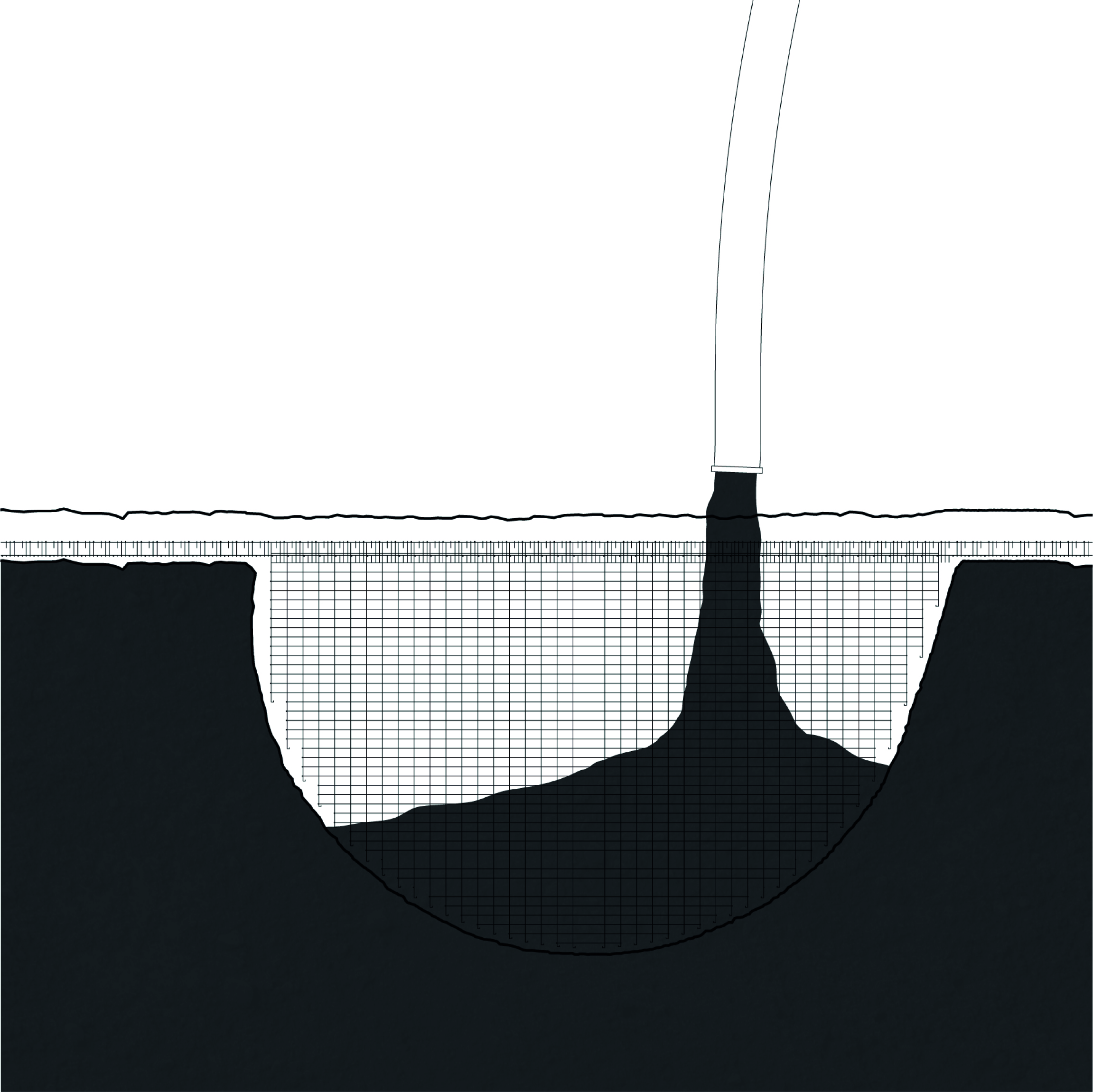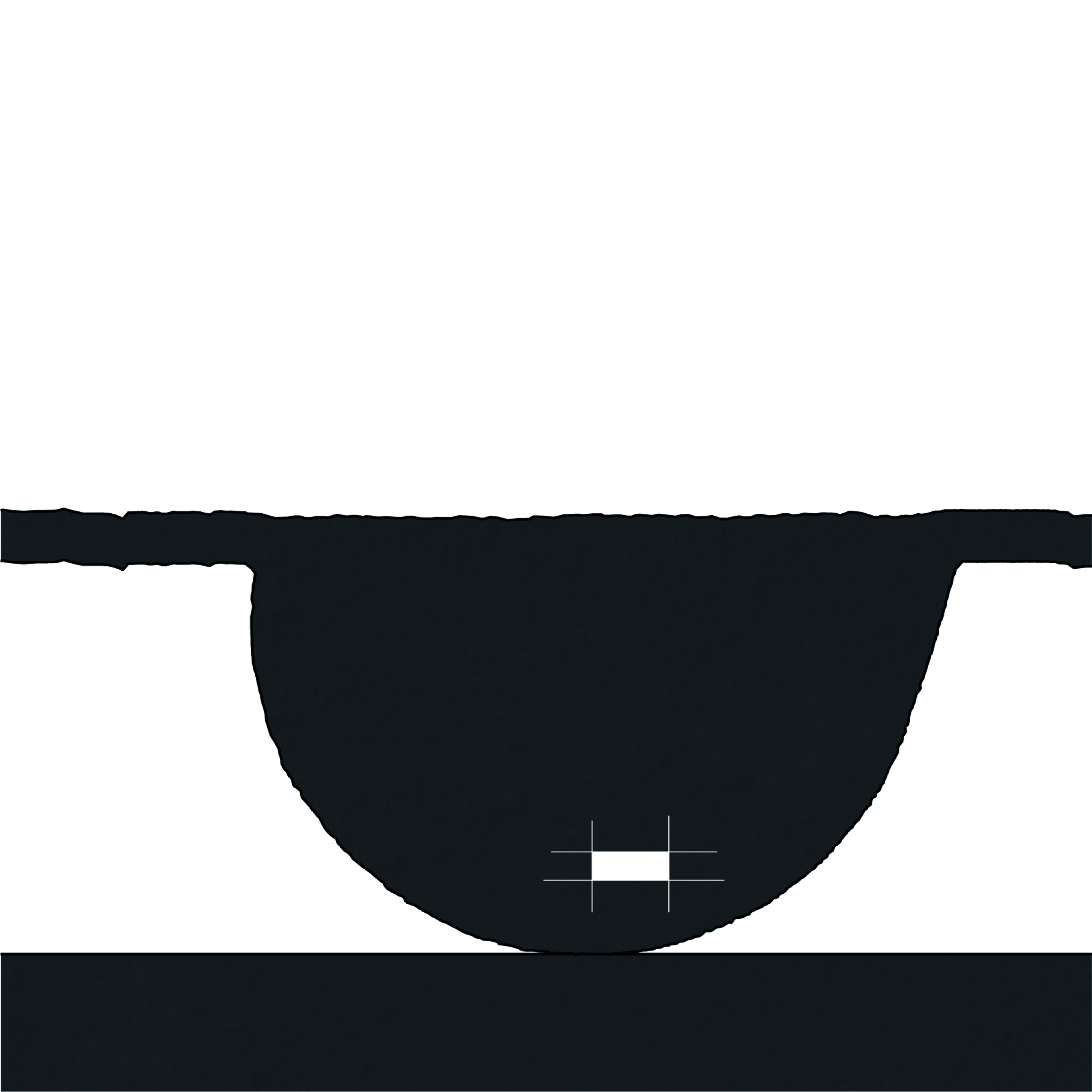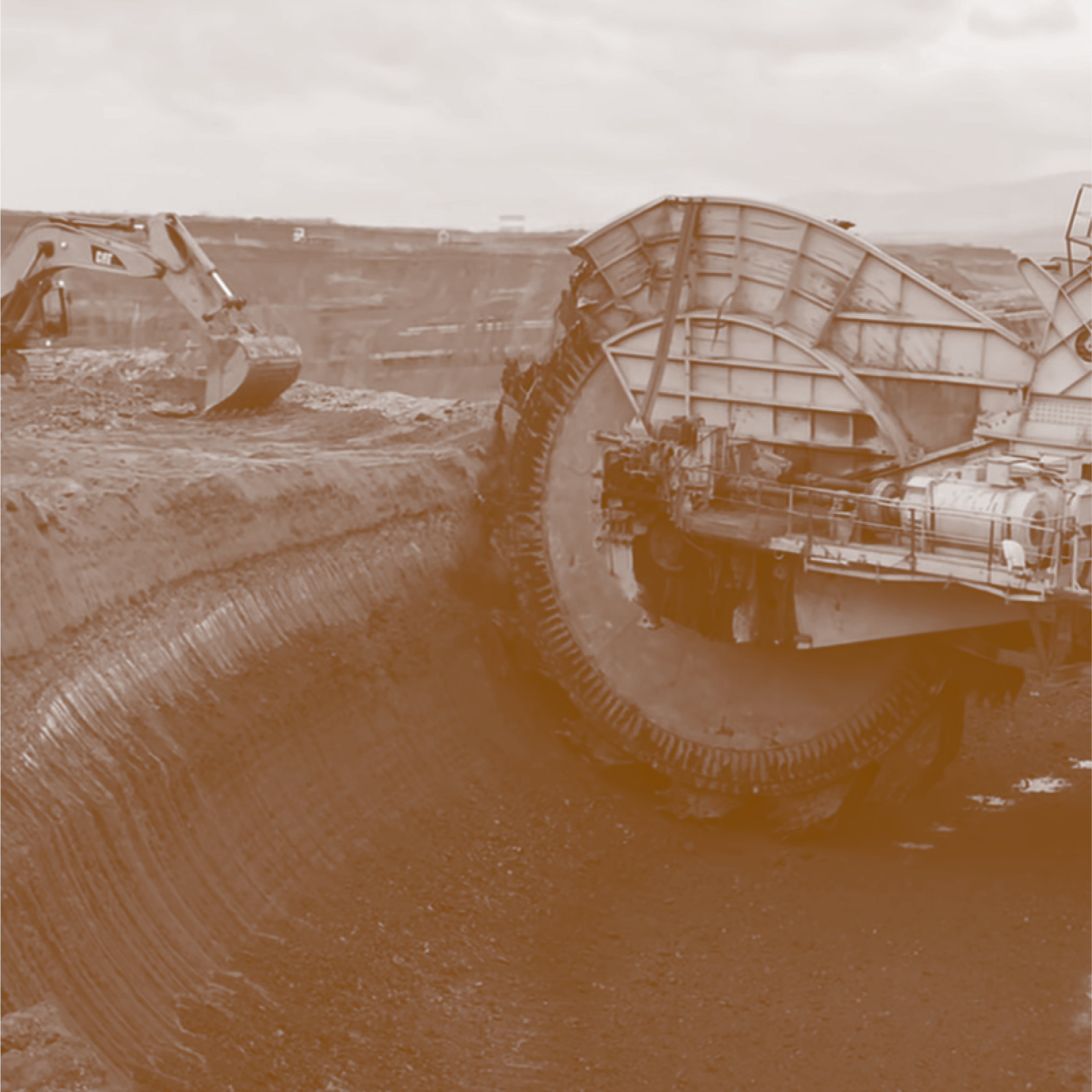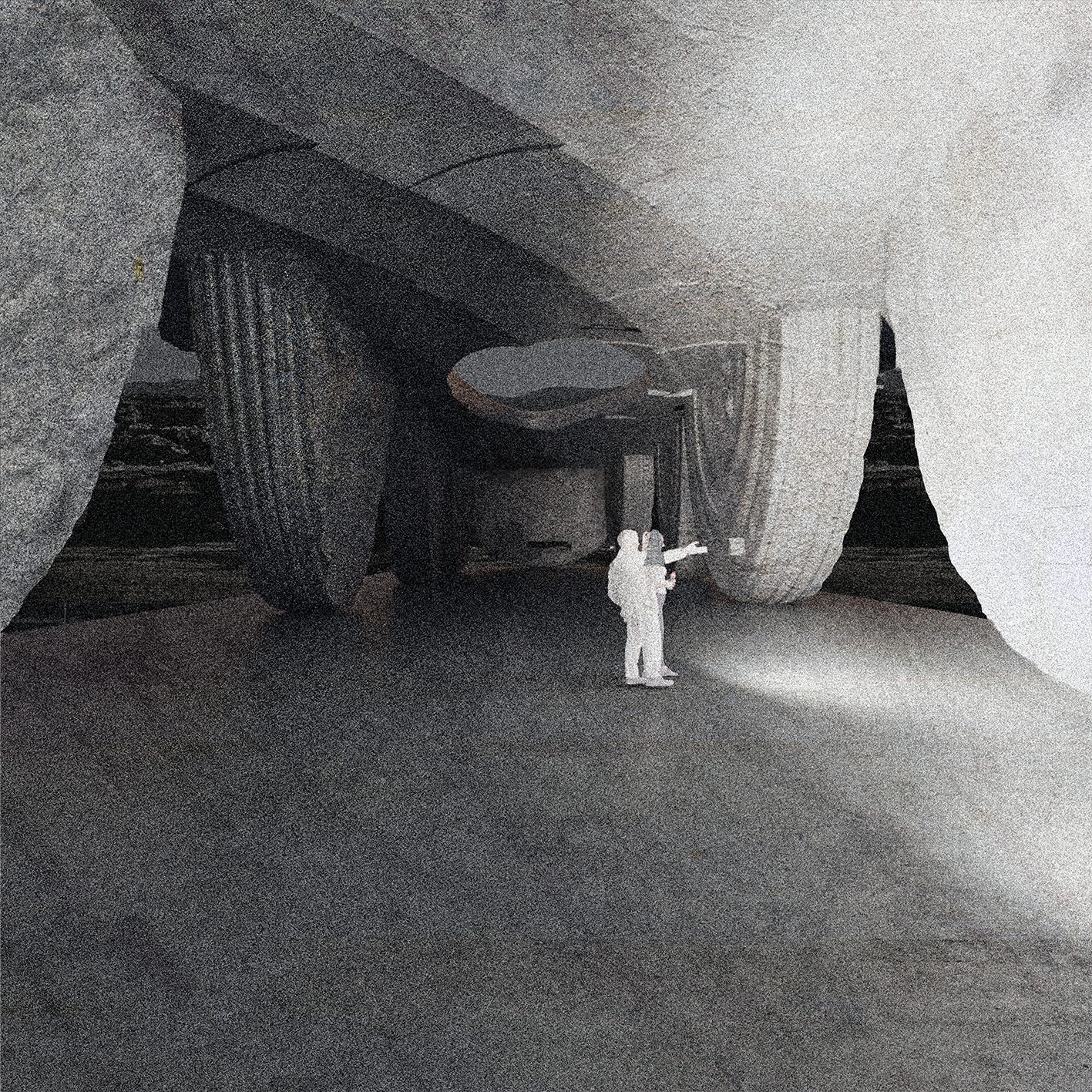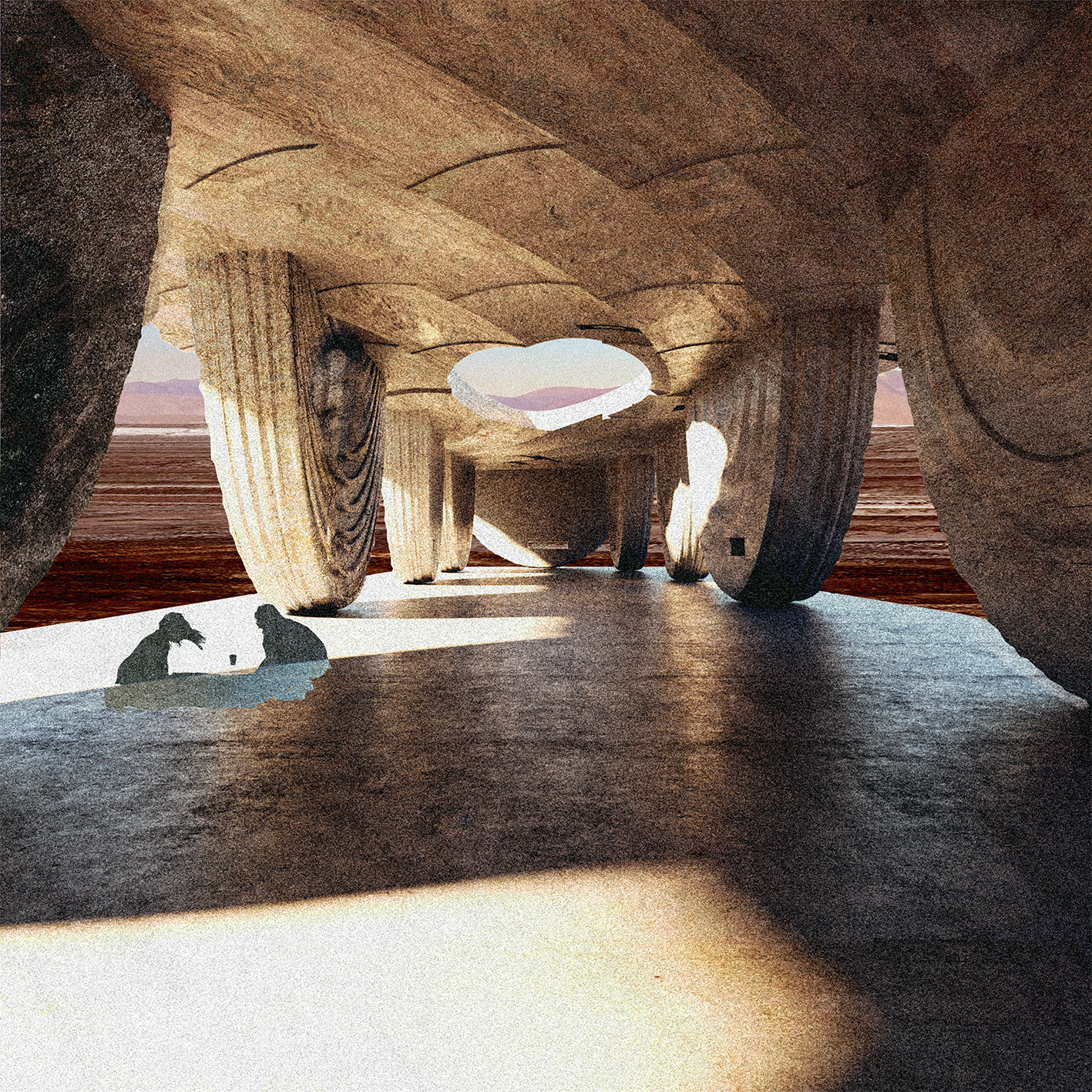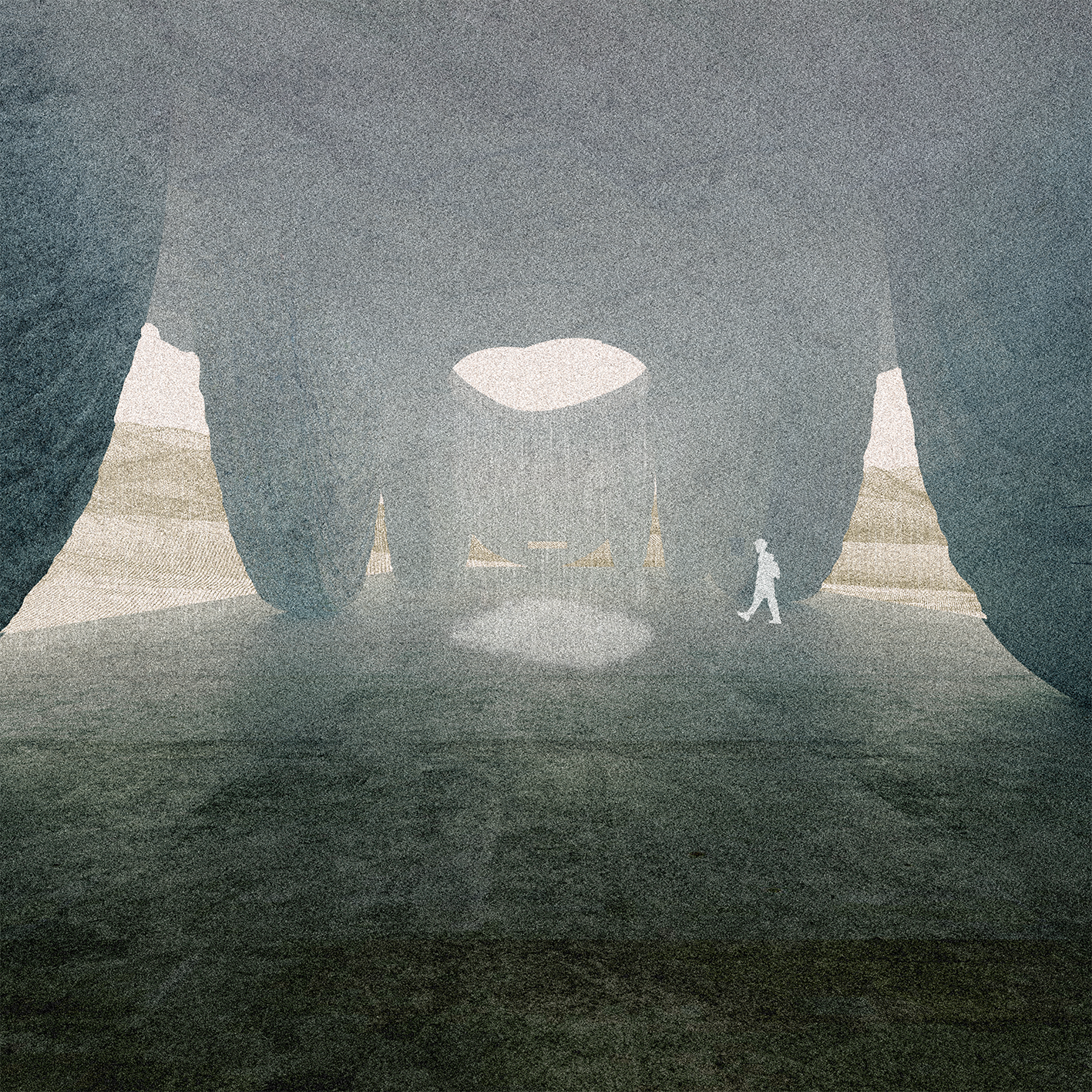OBJECT 3: LOST AND FOUND OFFICE
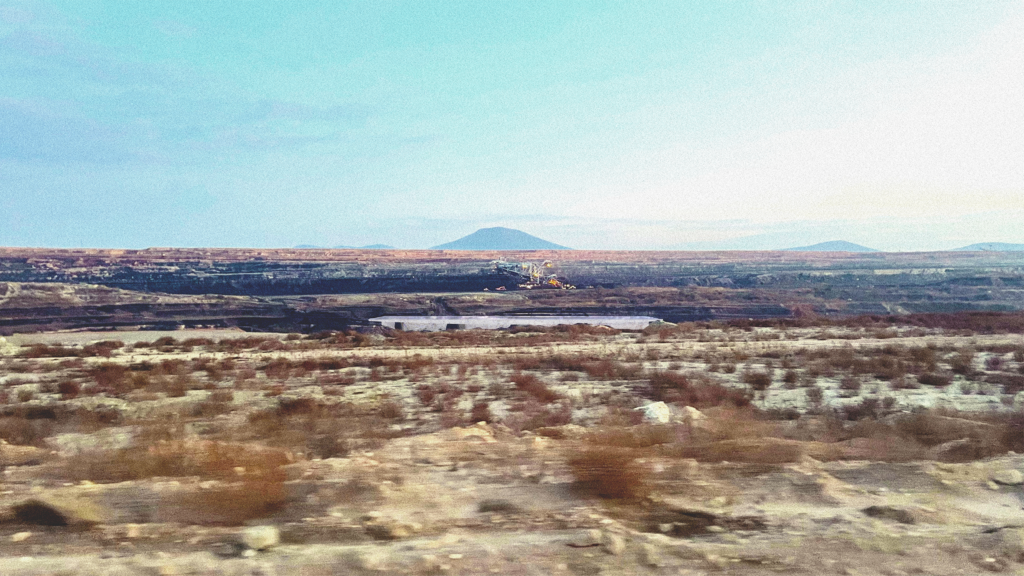
The last object is a pavilion structure which houses various items that have been found during the lignite extraction. Its structure anachronically displays objects from assorted temporalities, such as a 3-million-year-old mastodon tusk that has been found during one of the landslides, numerous traces of former settlements from both the neolithic period and recent past, as well as contemporary objects of daily life.
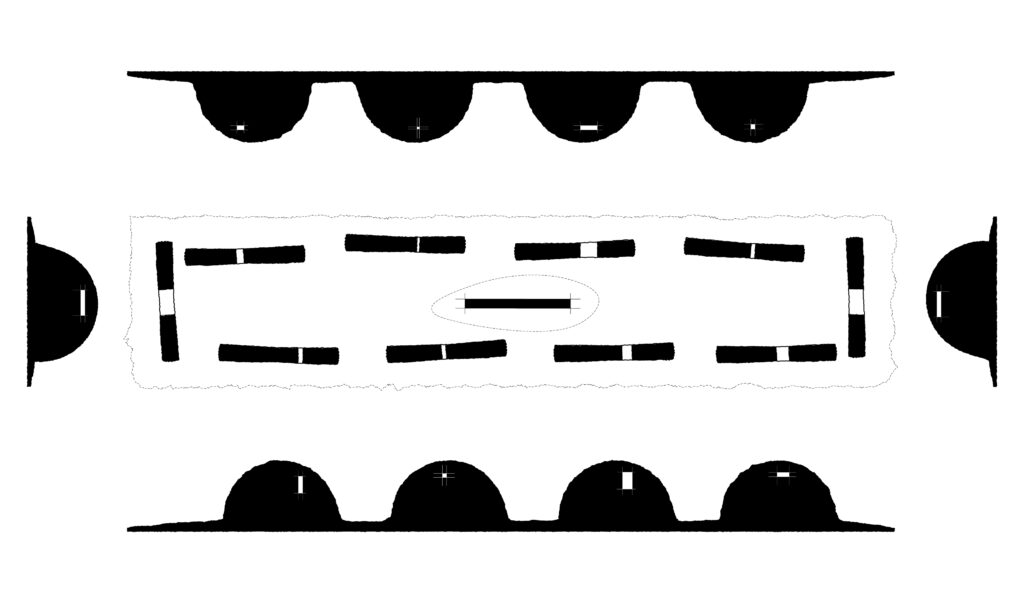
The object is built at the end of the soil removal process, located in the new, temporary pit. A context-based intervention is a reflection of the insensitive, profit-driven form of transforming the landscape. It consciously alters the process, by adding an architectural layer to it. Its form derives from the logic of cutting and filling of a bucketwheel excavator. The main tool of extraction is used to form large cuts in the topsoil, creating the mould for concrete. After pouring, the surrounding earth is removed, revealing yet another found fossil. The polished concrete roof contrasts with the untreated interior of the structure. The association of an abiding figure of the pavilion, and an ever-changing figure of the hinterland, will create various outcomes in the future.
